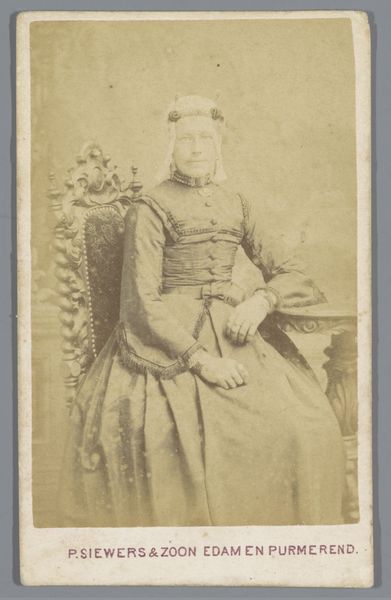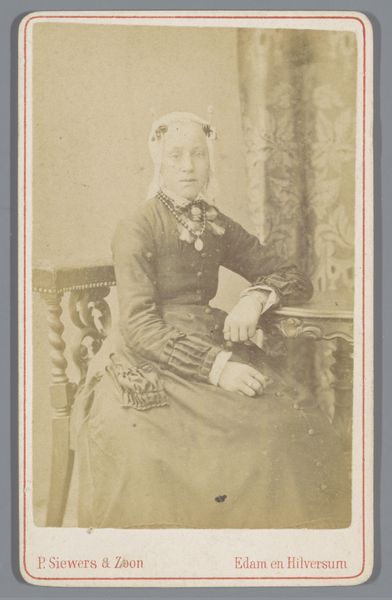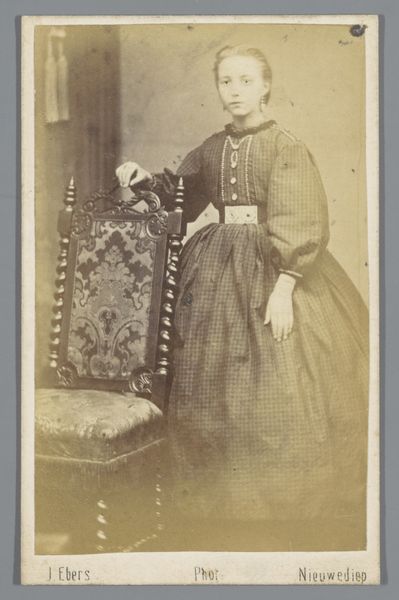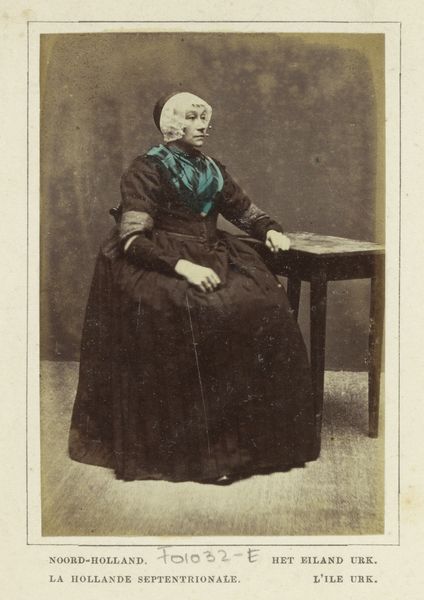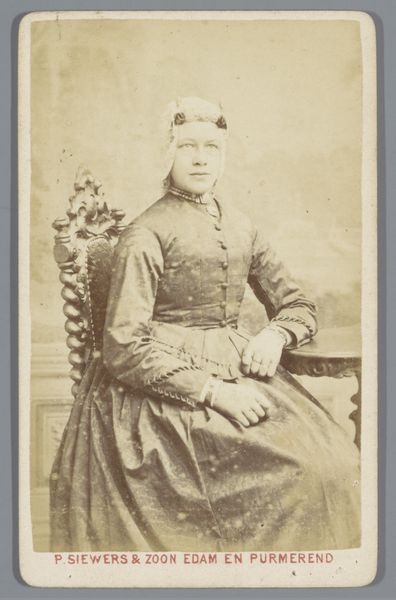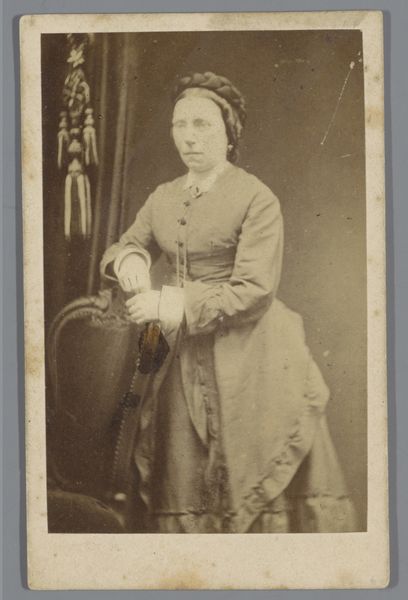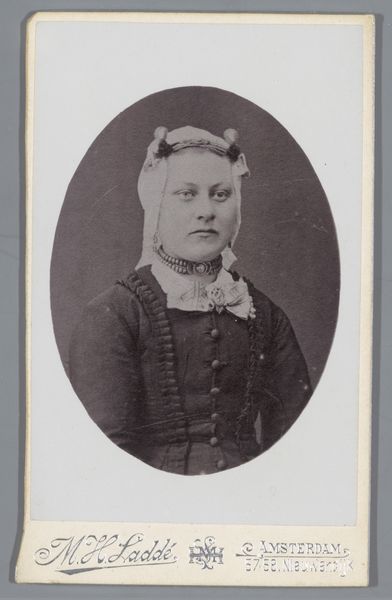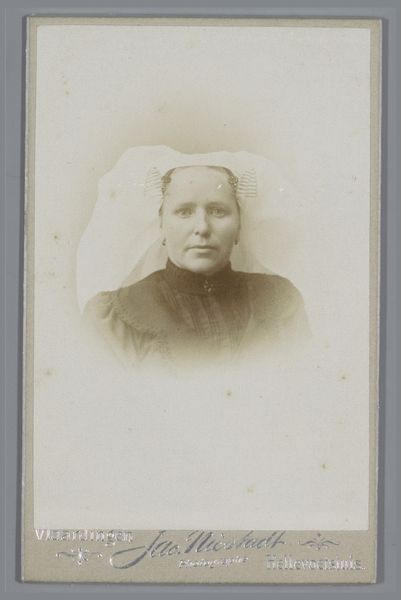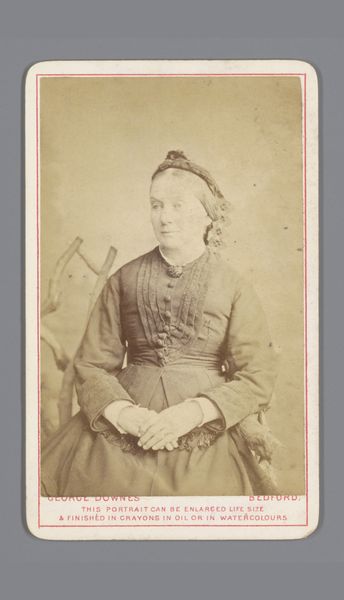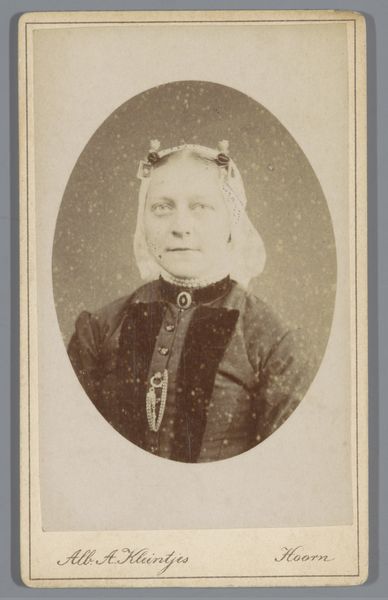
Portret van een onbekende vrouw in klederdracht van Beijerland, Zuid-Holland 1860 - 1890
0:00
0:00
photography, albumen-print
#
portrait
#
16_19th-century
#
photography
#
19th century
#
albumen-print
Dimensions: height 87 mm, width 60 mm
Copyright: Rijks Museum: Open Domain
Curator: The Rijksmuseum holds this fascinating albumen print from somewhere between 1860 and 1890. It's titled "Portret van een onbekende vrouw in klederdracht van Beijerland, Zuid-Holland," which translates to "Portrait of an unknown woman in traditional costume from Beijerland, South Holland." Editor: My first impression is somber elegance. The muted tones of the albumen print give it an almost ethereal quality, despite the very grounded subject matter in her traditional attire. You really sense the weight and texture of the fabrics and the intricate details. Curator: Indeed, albumen prints like these were a relatively new technology at the time, utilizing egg whites to bind the photographic chemicals to the paper. It speaks to a burgeoning industry of portraiture becoming more accessible to a wider population. Prior, such records were limited to painted portraiture and its elite clientele. Think of the democratizing force here: access. Editor: And access intertwined with identity. Consider the costume itself – it wasn't just fabric, was it? It represented Beijerland's cultural identity. This photo became part of a visual culture that simultaneously preserved and perhaps solidified certain power structures tied to regional dress. Were these garments produced locally, sustaining a certain kind of artisanal labour? How does this imagery circulate amongst Beijerland residents? Or those interested in recording "Dutch" heritage? Curator: Precisely! This woman’s clothing functions as a powerful signifier. This piece gives a sense of the rapid advancements in photographic reproduction impacting how people defined and presented themselves. What narratives were carefully being told, or excluded, with each of these photos taken at the time? Who could commission them? Editor: I find myself also pondering the labor inherent in albumen prints. The time and skill to prepare the paper and develop the image… the embodied, almost artisanal labor contradicts the mass-production potential of photography. Curator: Well, thinking about the photograph’s accessibility versus how long production lasted really highlights how images rapidly became a widespread form of memorialization. Editor: Ultimately, analyzing it this way reminds me that what appears simple and personal – a portrait – is steeped in complex processes, reflecting larger social and economic forces. Curator: Absolutely. This portrait reminds us of how art and photographic industries played an important part in cultural, political, and social history.
Comments
No comments
Be the first to comment and join the conversation on the ultimate creative platform.

